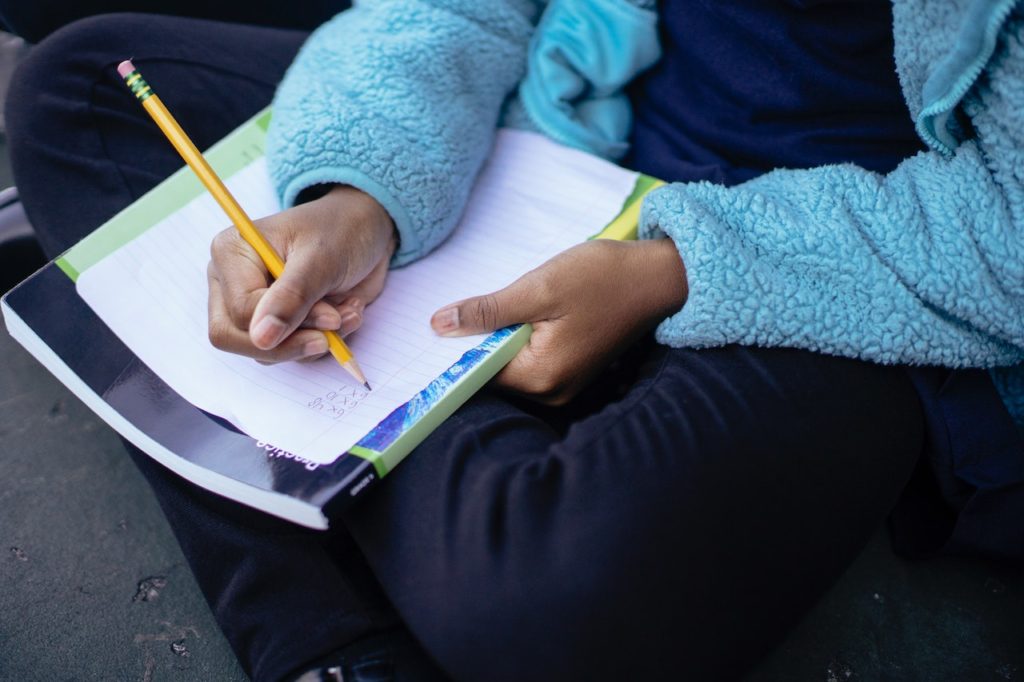So I’ve gone from the early stages of learning Haitian Creole where I was spending a lot of time looking for resources while I was practicing my lessons to plunging into the deep end of the pool. I now have an embarrassment of riches, as they say. I’ve discovered that there are a lot of resources in the public domain that are available for free—you just have to know how to find them.
And one of the key things in that discovery is connecting with people who are learning the language.
Which is also one of the most interesting things, because I’m meeting people where I would not expect to find them.
Oh, I’m using the usual suspects, and social media is my largest source of contacts. But even in social media it requires some effort and a whole lot of luck to make connections.
My most recent library of content was given to me by someone who saw my posts on Facebook for reasons unknown to me, sent me a friend request, and then we connected. He’s more advanced in the language journey than I am—I suspect he’s a C2 level speaker of the language even though it is an acquired language for him. And he has a boatload of resources from the University of Kansas that I didn’t know existed, so now I have hundreds more pages of materials available to me, from content written for the student to content written for the native speaker who is learning their own language.
The two audiences are very different. For the student, it is a lot of workbook lessons, challenges, vocabulary builders, and the like. The writing in these student-oriented materials is carefully simplified, not to the point of being sing-songy or unrealistic, but definitely written with a constrained vocabulary and grammar that takes you through increasing levels of difficulty. Still, what I’ve found so far in these student lessons is that they prepare you for the next steps, which are to dive into the language immersively.
So for that, I have more than a few dozen books and collections, almost all from the University of Kansas, that are written for the adult Haitian learner. They are far more colloquial and illustrative of life in Haiti as a typical resident, and they assume a good knowledge of idioms and culture and practices.
It is weird to me that I can read these materials and kinda get the gist of them, but golly they are way more complex (to me) as an English-speaking student who has so little comprehension of Haitian culture and idioms. There are just so many “just between us” moments where a phrase looks understandable on the surface, and then when I look through my other resources, I find that it’s an idiomatic phrase that isn’t challenging to Haitians ditou.
I also bought or put into my wish list a few books to help supplement these public domain ones. One, Pale Kare: Dizon Ayisyen Pou Tout Okazyon (Speak Squarely: Haitian Phrases for All Occasions), is a book of Haitian phrases or idioms with a story to explain what the phrase means and how to use it. It wasn’t too expensive ($18), so I bought it to go with the dozen or so printed books I already have.
The other is a book of Haitian idioms! English – Haitian Creole Bilingual Glossary of Idiomatic Phrases & Expressions: 2nd Edition has about 1800 entries, and it is an English-Creole book so people who speak either language can use it. However, it’s $50, and that’s pricey for me. So I have it in my list of “Things I would like to buy but have to wait.”

Along with these new purchases is my near-completion of the 2nd key book in my language journey, TI KOZE KREYÒL, which is a book authored by Dr. Bryant Freeman, who also published the book CHITA PA BAY (a summary of MÈT LAWOUZE, Jacques Romain’s book MASTER OF THE DEW/GOUVERNEURS DE LA ROSÉE). CHITA PA BAY is an elementary book for beginners at the adult/college level. It’s not too difficult, but it assumes a working knowledge of elementary grammar, and the student should know about 700 of the most common Haitian words.
The 2nd book, TI KOZE KREYÒL, is not a sequel but an original story of 19 small chapters about two people in a Creole class who meet, fall in love, and decide to go to Haiti for their honeymoon. It’s a great way to teach new concepts, grammar, and vocabulary; it’s funny at times because the Jan, the male lead, is often a well-meaning dunderhead while Mari, the female lead, is more balanced and a much better planner; and of course, it masquerades as a tour of Haiti and Haitian cultural artifacts and history.
Each chapter is followed by a set of about 16 questions to answer, and mostly they can be answered without much effort if you read the story in each chapter. But a few times I was going to my dictionary to look up a word or phrase.
I just finished the last chapter today, and reluctantly close this part of my language journey. There is nothing more like these two books, authored by teacher with skills in both English and Haitian Creole, available for free, professionally developed to push students to a new level one step at a time. Rigorous, but not impossible.

However, at the end of these 19 chapters is a set of pages with lists of words in Haitian Creole and a set of directives to use these words to answer a few questions. So instead of reading a story and answering questions, this is more of a Build Your Own Adventure. The first one is to talk about your family. Who are your parents and where are they from? How many brothers and sisters do you have, and what are their names. If they are married or are in a relationship, who is their partner? How many kids do they have? And then talk about your uncles and aunts, and all your cousins. Talk about your home and where you live, and then talk about your pets.
I have two brothers and three sisters, three uncles and one aunt, eighteen nieces and nephews, about a dozen cousins (I couldn’t quite remember how many), and I don’t even know how many children my nieces, nephews, and cousins have—and some of them have children as well.
But I made the effort and wrote almost a dozen pages describing everyone.
None of this is public, so even though I spill all the family secrets, no one’s going to find out. Nosiree, even if you try to find this out, the book with all of this is carefully hidden in plain sight in my office with the label Family Secrets: DO NOT TOUCH. Our secrets are safe with me!


